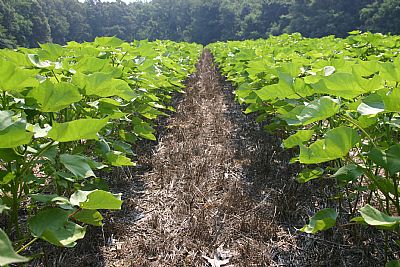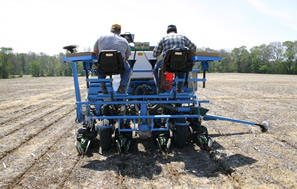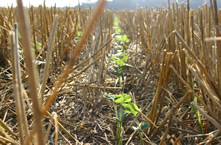


View USDA Tillage System Stats for Tennessee
No-Till Question & Answer
What is no-till?
No-till is a method of farming where the soil is left undisturbed between the harvest of one crop and the planting of another. Planting is accomplished in a narrow seedbed, or slot, created by a coulter or disk opener.
Is this a new practice?
No. A few farmers started using no-till in the ’60s and ’70s, however since 1989 no-till has become an increasingly popular farming practice.
What are the benefits?
There are many benefits associated with no-till. First and foremost, are the environmental benefits. No-till reduces soil erosion from wind and water runoff. Wildlife benefit from crop residues that provide food and shelter. Farmers benefit from reduced labor requirements, time savings, fuel savings, reduced machinery wear and higher soil moisture. And everyone reaps the benefits with cleaner water, reduced air pollution and less ditch maintenance.
Why does it look so messy?
People who are accustomed to seeing freshly plowed fields may think of no-till as messy or ugly. This is because the new crop is planted directly into the remains of the last crop. It isn’t plowed or disked under with conventional methods.
Are the yields the same?
Research findings indicate that in Tennessee, on average and under the same growing conditions, no-till will produce the same or better yields than a plowed field, or conventional tillage.
What has UT’s role been in no-till?
The University of Tennessee has been a leader in no-till research. The Research and Education Center at Milan has been a leader in this effort since 1981. The research conducted by UT AgResearch at Milan is known worldwide.
Do many Tennessee farmers use no-till?
YES! A recent survey shows Tennessee farmers are third in the nation in the percentage of cropland planted in no-till. In 2008, Tennessee farmers planted 70% of their land in no-till. And Tennessee is the leader in no-till cotton. Farmers planted more than 190,000 acres of cotton in no-till in 2008.
Where can you see no-till?
Every county in Tennessee has no-till fields; however, the best day to see no-till and hear no-till discussed is at the Milan No-Till Field Day, held bi-annually on the fourth Thursday of July at the Research and Education Center at Milan.
